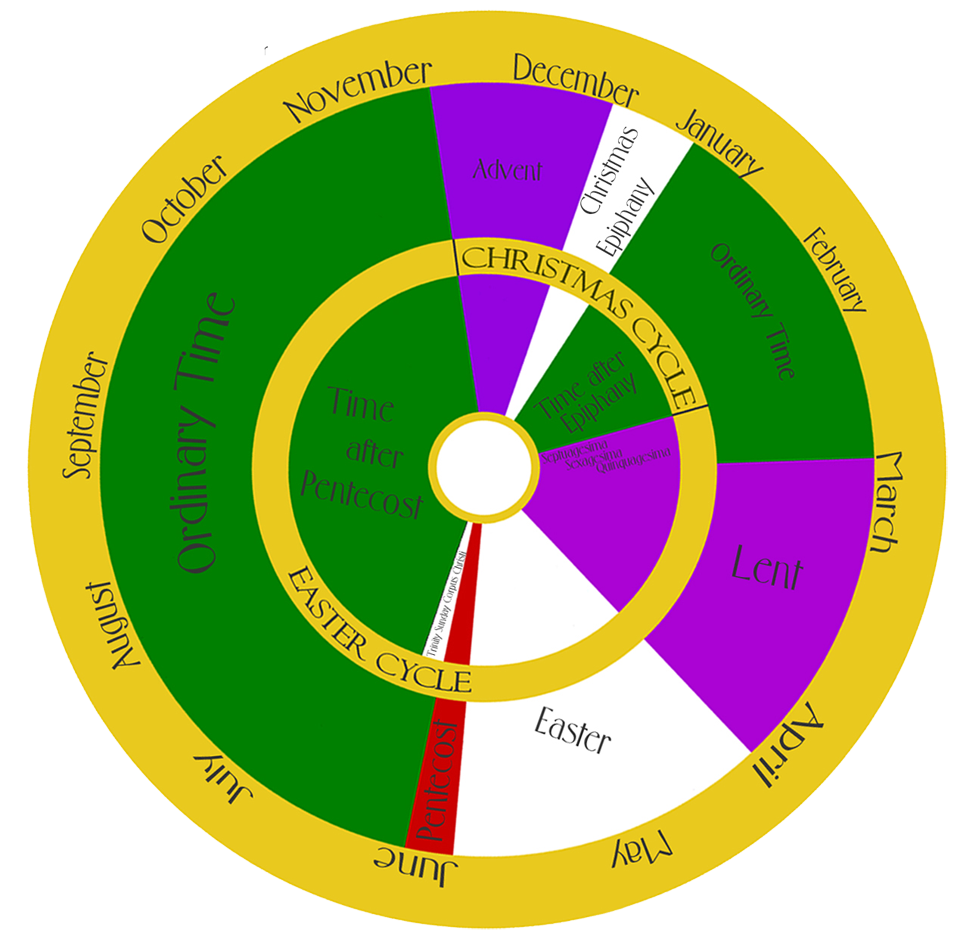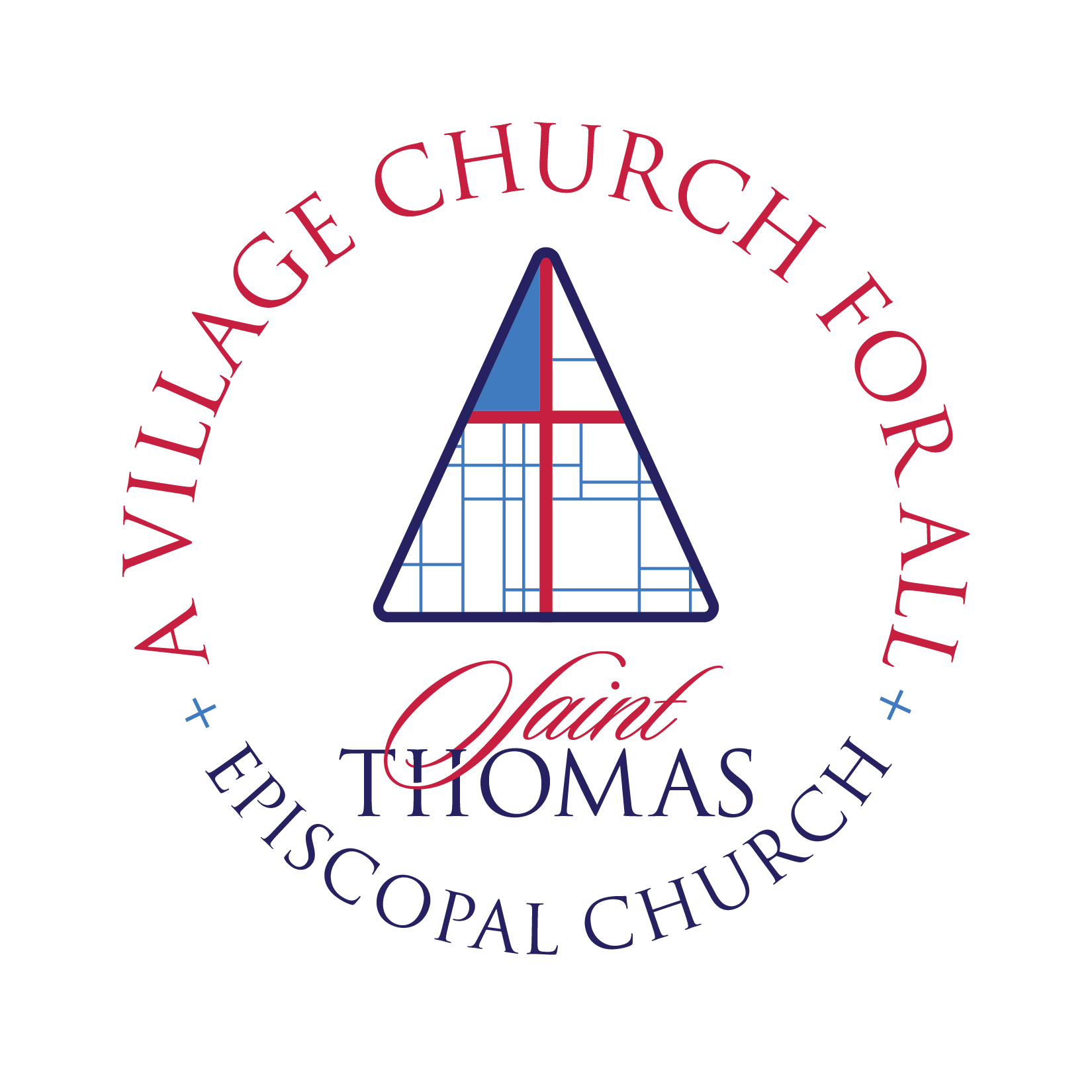Guide to the Service
It is part of our mission to call all who come through these doors into deeper levels of communion with Christ and each other. Many people in our church come from different faith backgrounds, and the Episcopal language can be “foreign” and a barrier to understand what is going on in the service. Below are some helpful excerpts from An Episcopal dictionary of the Church: A User-Friendly Reference for Episcopalians, by Don S. Armentrout and Robert Slocum, Church Publishing Inc.
We also offer periodic Inquirers Classes which cover what it means to be an Episcopalian. If you are interested in learning more, please contact us.
What do we mean by “Liturgy”?
Liturgy is the church’s public worship of God. Liturgy includes actions, words, symbols, rituals, scripture, prayer, and music; together they comprise our worship service. Our liturgy or service expresses the church’s identity and mission, including the unity of its members in Christ and its concern for the needs of the world. It also expresses the spiritual reality of God’s presence in our lives. It manifests our love of God. The liturgy varies according to the season of the church year.
Seasons of the Church Year
Briefly, they are the cycles of Easter (resurrection) and Christmas (incarnation). The resurrection cycle includes Lent through the 50 days following Easter. The incarnation cycle includes Advent through the Epiphany. The rest of the time is “ordinary” or “numbered” time when we learn about the life and teachings of Jesus. Beginning with Advent (late Nov. or early Dec.) the church year goes: Advent – Christmas- Epiphany- Lent- Holy Week & Easter- 50 days of Easter- Pentecost- Ordinary time, late spring through fall – then back to Advent.

Colors of the Church Year
Purple: a solemn color of waiting and reflection, used during Advent and Lent.
White: signifies the purity and light of Christ, used on Christmas and Easter.
Red: used during Holy Week (calling to mind blood or sacrifice and martyrdom) and for the feast of Pentecost (when we give thanks for the gift of the Holy Spirit, which is symbolized by fire).
Green: used for the ordinary time after the Epiphany and also after Pentecost. Green is symbolic of growth and life – these two periods are times we enter into learning and growth.
At St. Thomas you’ll see the colors of the church year reflected in the linens that cover the altar and in the priest’s robes or vestments.
Sacraments
Baptism and Eucharist are the primary Sacraments in the Episcopal Church. There are other sacramental actions which include Confirmation, Marriage, Ordination, Reconciliation, and Anointing for Healing.
Eucharist
Is the visible sign of Christ’s body and blood and is the principal act of Christian worship, also known as Holy Communion. The Eucharist is based on the Last Supper where Jesus shared bread and wine with his disciples. He identified the bread and wine as his blood and explained that they are symbols of the new life he came to bring us (see New Covenant). The term “Eucharist” comes from the Greek work for “thanksgiving.”
Rite I and Rite II
The language in the Rite I service is more traditional, harking from the Elizabethan era. We celebrate the Rite I Liturgy at 8AM on Sunday. The Rite II language is more contemporary, developed about 25 years ago. We celebrate the Rite II Liturgy at 9:30AM on Sunday.
Hymn of Praise
We sing various hymns of praise, but most often we sing the “Gloria in excelsis,” the words used to greet the shepherds when Christ was born. We also use a more penitential song in Lent, and “The Feast of Victory” in the season of Easter.
Collect
A short liturgical prayer that varies in content according to the day and season in the church year. It’s typically comprised of a single sentence that “collects” the themes appropriate to the day.
Lessons
Since 2006, the Episcopal Church has followed the Revised Common Lectionary. This is a lightly revised schedule of readings that you find in the back of your Book of Common Prayer. We also read an Old Testament lesson, then a Psalm (see below), then a New Testament lesson.
Psalm
A psalm is actually a hymn of the Old Testament. They are ancient poetic expressions of faith. Many of them were in use before 500 BC! They were traditionally sung. We read them together in a variety of ways – in unison, responsively (breaking at the asterisk) between the leader and congregation, or sometimes between the men and women, or even between the left and right halves of the church.
Gospel
The word “gospel” comes from the Greek word for “good news”. The New Testament contains for gospels – Matthew, Mark, Luke, and John – each of which tells the story of Jesus’ life, ministry, and teachings from a different perspective. Our weekly gospel reading comes from one of these four books of the Bible. The reading of the Gospel by the priest is the high point of all the scripture that is read during the service. Our acolytes carry the cross and the Gospel book forward toward the congregation for the priest to read. We also “wrap” the gospel reading in song: we sing the Sequence hymn as the Gospel book is carried forward, and we hear the themes of that hymn as it is carried back to the chancel.
Sermon
The purpose of the sermon is the “break open” the Word of God heard in the the readings for the day. The sermon teaches us about God’s message in its historical context, and then personalizes and contemporarizes it so we are able to hear and feel its inspirational message for our lives today.
Nicene Creed
The Nicene Creed was written by clergy in the 4th century AD to gather and define the common beliefs of the many Christian sects existing at the time in order to provide unity. While the Apostolic Creed (which we speak at baptisms) is a statement of personal belief, the Nicene Creed is a statement of what we as a church believe and communal expression of faith – more of a community statement then a personal statement.
Catholic
The use of this word in the Nicene Creed means “general” or “universal”. It emphasizes our inclusion of all people, from ancient times to the present.
Apostolic
The use of this word in the Nicene Creed reflects our belief that the church continues the faith and work of the early Christian apostles.
Prayers of the People
This form of prayer-for-others has been in existence since the 2nd century AD. This prayer addresses six categories of those in need: the church, the world, the nation, the community, the suffering, and the dead. It serves to remind us that we are joined in Christ’s love to those in need: they are every bit as present with us as those sitting in the pews next to us.
Intercessor
In our church a lay (non-ordained) member of the congregation leads the Prayers of the People. We call that person the “intercessor.”
The Peace
When we greet one another in the name of the Lord, we are recalling an ancient Christian practice. (The book of Romans tells us to “Greet one another with a holy kiss”.) This greeting is a sign of Christian love and relationship. The placement of The Peace in the service-right after the confession of sin and absolution – is significant. If you consider that our brokenness, shame, and sin isolate us from one another, then once we’ve confessed and received absolution (the priest pronounces that God forgives us without exception or condition), it makes sense for us to celebrate our reintegration with one another. Passing the peace of God amongst one another is how we celebrate. When you greet those seated around you, consider that your smile and warmth may be the only love they receive today.
Thank Offering
We give anyone who wishes to do so an opportunity to come forward and proclaim their thanks for all the blessings of this life, especially those which draw them closer to God. We say a Thanksgiving Prayer together for those who proclaim their gratefulness before their church family as well as those who wish to say a private “Thank you, God!”
Doxology
Words of glory or praise to God. We sing this praise when the offerings are presented to God.
The Great Thanksgiving
This is the central prayer of the Eucharist. In it, the priest gives thanks for the bread and wine, and also for creation (giving thanks for our lives, our souls, the earth and all its inhabitants), redemption (giving thanks that Jesus offered his life on the cross in order that our sins would be forgiven and that we would no longer suffer alienation from God), and sanctification (giving thanks for the process of God working within each one of us to bring us into a more full, rich, and holy life).
Sanctus
Comes from the Latin for “holy”, and is a hymn of adoration and praise.
New Covenant
This is a term with deep and complex meaning. In brief, it describes the new relationship or agreement we have with God that was given by Jesus Christ. At the heart of this agreement is love: Through his loving sacrifice on the cross, Jesus agrees to bring us into the kingdom of God and give us a full life. In return, we agree to follow him in loving God and one another. The New Covenant describes a spirituality that eliminates boundaries between people and between God and people. It promises a relationship with God where compassion and mercy are more important then rules, laws and judgement.
Sanctus Bells
This is the bell rung by the acolyte while the priest is blessing the bread and wine for Communion. The bells call attention to important moments in the liturgy. This practice dates from the 15th century AD.
Breaking of the Bread
The priest breaks the consecrated bread/wafer prior to distributing Communion. This act recalls that Christ’s body was broken for us and for our salvation.
Communion
The act where we are “in union” with one another in Christ in the sacrament of His Body (the bread) and Blood (the wine). Sacraments are high intensity symbols that teach us about God. They are participatory, communal, and efficacious – that is, if we partake in them over time, with holy intention, they shape our souls. We believe that the sacrament of Communion is God’s gift to be shared freely with anyone who comes forward to receive it. All are welcome!
Dismissal
The words spoken by the priest or lay worship leader at the very end of the service. The dismissal is the “sending out” of the congregation to embody Christ’s love and teachings in the world. It helps to remind us that being a Christian means living our beliefs beyond Sunday.
What’s in the Pews?
The Red book is The Book of Common Prayer, the official book of worship of the Episcopal Church. Although it’s been modified over the centuries, this book has been in use since 1549. Its purpose is to provide liturgies, prayers, and instructions so Episcopalians and Anglicans the world over may share in and be united by a common form of worship. The elements of our worship in your user-friendly service book come from The Book of Common Prayer.
The Blue book is The Hymnal 1982, the official book of hymns of the Episcopal Church. Like the prayer book, it has been in existence for many years – since 1789 – and modified over time. The edition we draw from dates from 1982. The hymns printed in your service booklet come from this hymnal and from other church music resources.
